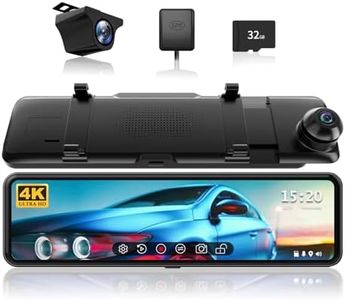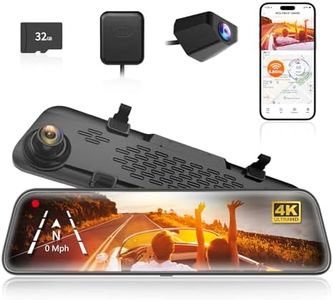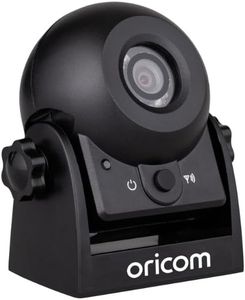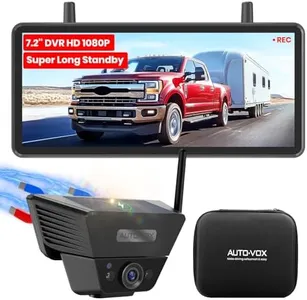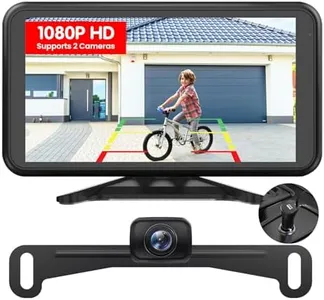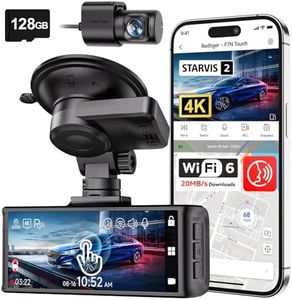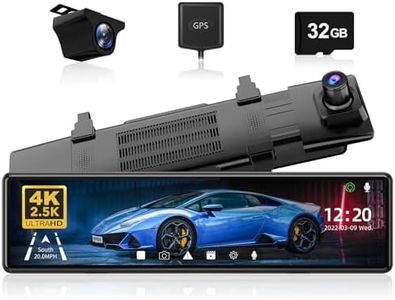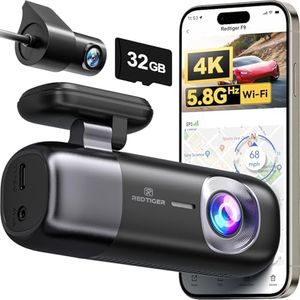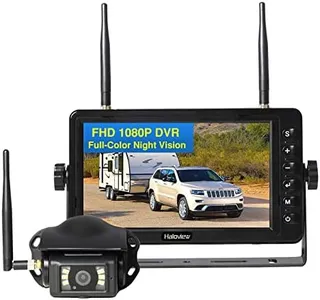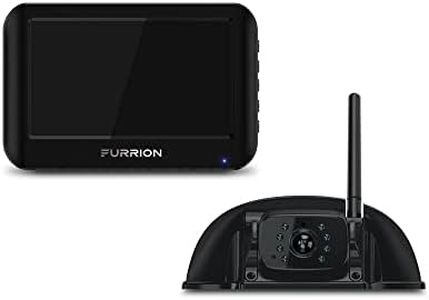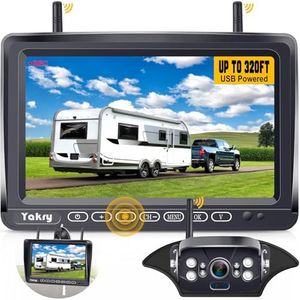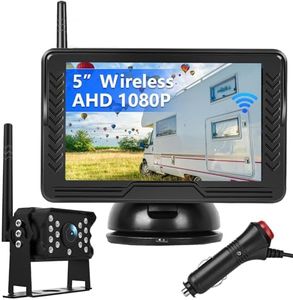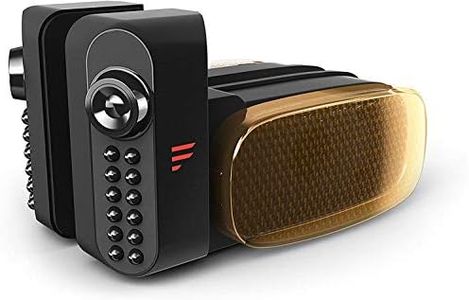We Use CookiesWe use cookies to enhance the security, performance,
functionality and for analytical and promotional activities. By continuing to browse this site you
are agreeing to our privacy policy
10 Best Rv Backup Camera
From leading brands and best sellers available on the web.Buying Guide for the Best Rv Backup Camera
Choosing the right RV backup camera can make a big difference in your safety, ease of parking, and peace of mind when reversing your vehicle. When shopping for one, it's important to focus on the features that match how and where you'll use your RV. Learning about the key specifications will help you compare options and find a camera that fits your RV lifestyle and needs.Camera Type (Wired vs Wireless)This refers to how the camera connects to the monitor inside your RV. Wired cameras use physical cables while wireless cameras transmit video using a signal. Wired systems tend to offer more stable video with no interference but require more complex installation, as you'll need to run cables through your RV. Wireless cameras are easier to install but might sometimes suffer from signal loss or interference, especially on longer RVs or in areas with lots of electronic signals. If you prioritize the simplest install and have a midsize-to-small RV, wireless might suit you, but if you want the most reliable connection and don't mind a more involved setup, wired is often the better pick.
Field of View (Viewing Angle)The viewing angle is how wide an area the camera can see behind your RV, measured in degrees. A narrow view might miss obstacles at the edges, while a very wide view can show more but sometimes distorts objects. Typically, angles from 90–120 degrees give a straightforward rear view, while 120–150 degrees offer a much broader perspective at the risk of some fish-eye effect. For large RVs or when backing into tight spaces, a wider angle helps you spot more, but for a more focused, undistorted image, a moderate angle is often enough.
Night VisionNight vision is the camera’s ability to show a clear image in low light or total darkness. This is usually achieved with infrared LEDs around the lens, allowing you to see obstacles when reversing at night or in poorly lit campgrounds. Good night vision means you can rely on your camera at all hours. Some cameras have stronger night vision than others, so check how far (in feet/meters) the camera’s night vision can reach. If you often arrive or depart in the dark, choose a camera with strong night vision capability.
Monitor SizeMonitor size refers to how big the display screen is inside your RV. Common sizes range from about 4 to 7 inches diagonally. A larger screen makes it easier to see details, but may take up more space on your dashboard or console. If you want maximum visibility and have space, choose a larger monitor, while smaller setups can work if you prefer a more discreet display or have limited room.
Weather Resistance (IP Rating)The weather resistance, often shown as an IP (Ingress Protection) rating, tells you how well the camera will hold up against dust and water. Higher ratings mean better protection against rain, splashes, or even heavy downpours—important since the camera will be exposed outdoors. An IP66 or IP67 rating is common and suitable for most RV use. If you plan to travel in harsh weather or store your RV outside, pick a camera with a higher IP rating for greater durability.
Image Quality (Resolution)Image quality is measured in the camera's resolution, usually in TV lines (TVL) or in pixels like standard definition (SD) or high definition (HD). Higher resolution makes the image clearer and helps you distinguish small obstacles. For basic reversing, standard quality will do, but if you want to spot detailed hazards or need a sharp image for large vehicles, look for HD resolution.
Installation MethodInstallation method refers to how and where the camera mounts on your RV—such as on the license plate frame, above the rear window, or even on the roofline. Some are made for do-it-yourself mounting, while others may require professional help. Consider how comfortable you are with tools and whether you want a permanent or temporary setup. If you prefer not to drill holes, look for cameras that offer adhesive or license plate mounting.
